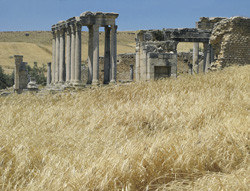African grain in the Roman age
Researchers on the EU-funded GRAWINAE project examined the typology, building techniques, function and productive context of these 'facilities'. They also studied climatic conditions, lithology and formation of the soils in their natural environment (pedology). At the same time, research delved into the transport developed at regional as well as long-distance levels. This entailed an examination of historical, epigraphic and geographical data. The goal was to better understand, from a global perspective, African grain supply and trade during the Roman age, and more generally for the Mediterranean region. Research into the structural characteristics and construction details of warehouses was carried out in collaboration with colleagues and field experts from Europe and beyond. GRAWINAE delivered virtual reconstructions of the buildings studied, and custom-made software was used to analyse the characteristics of timber floors and cases of hypothesised load. GRAWINAE was also part of a research programme working to develop an online tool allowing for a collaboration-based standardised inventory of ancient storage buildings. Research findings were presented at different conferences and will be published in scientific journals of archaeology. The resulting body of research was also accepted for publication in the series 'Collection de l'École française de Rome (CEF). Training opportunities during the project strengthened research capabilities beyond the field of archaeology. New partnerships were also formed between European academic institutions and research institutes in Africa. Project efforts have thus enhanced the study and knowledge of productive contexts, pedology, climatic conditions and grain species in various African provinces and Egypt. Having enriched the database on granaries and storehouses in the areas of focus, the outcomes also contribute to the anthropological study of grain storage structures and areas.







